The Educational School Tour was held on March 9th (Fri.), 2018 on the first day of the 24th Honolulu Festival, targeting the elementary to high school students who live on Oahu.
This educational program is designed to provide a cross-cultural encounter for the Hawaii community and its children. The participating artists and performers, with programs specifically prepared for this tour, provided interaction with the children, giving them valuable cross-cultural experiences.
Over 1,100 students from 17 schools in Hawaii participated in this year’s educational school tour.
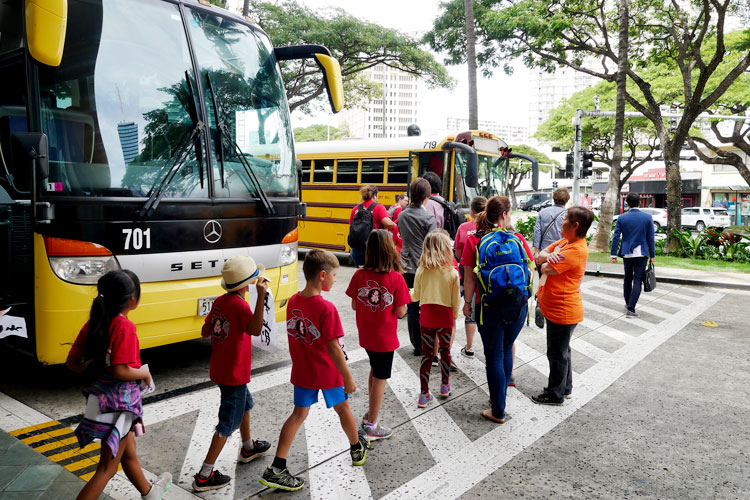
The students were divided into groups of approximately 20, and each group was escorted to six booths, one group at a time. This year, 15 groups from Japan, Taiwan, Korea, Australia, Marshall Islands and Hawaii gave presentations, played musical instruments, and performed dances. There was a special program, for Junior high and high school students, that commemorated the 150th anniversary of Hawaii’s Japanese Immigration. In addition to viewing the exhibition panels “Hawaii Nikkei Legacy,” the students also received a special lecture to learn about this piece of history.
-The Long-Awaited Day Has Come!-
At 9 a.m., the school buses started to arrive and the students poured in. The students’ faces glowed with excitement and anticipation.
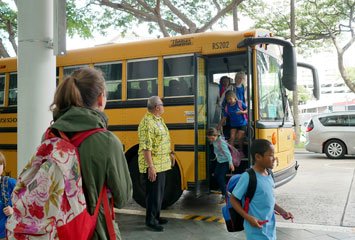
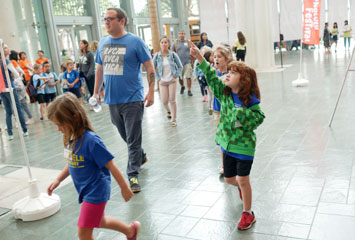
Outside the exhibition hall were the history boards, displaying the history of the Honolulu Festival year-by-year from its beginning.
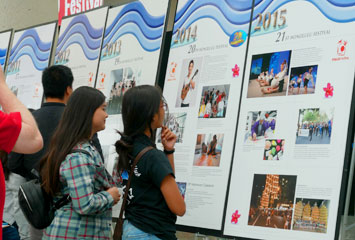
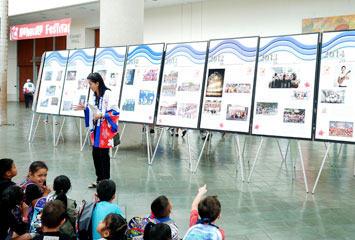
Yagura is a high wooden scaffold for bon dance. The children enjoyed dancing bon dance in a circle around the yagura.
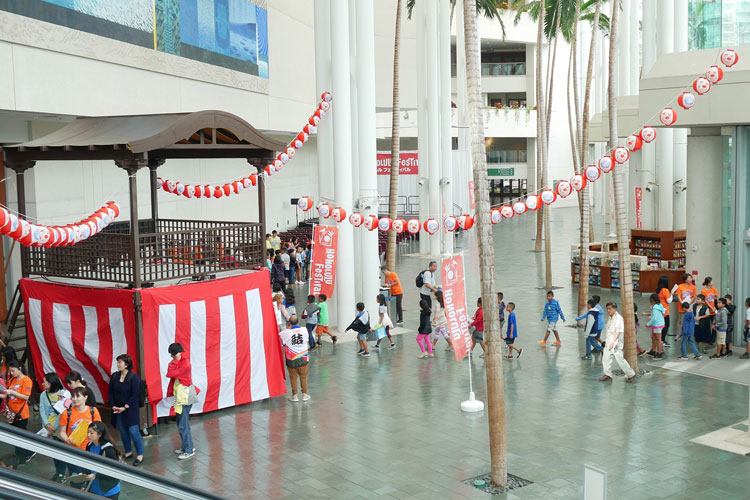
-What the Local People Want to Pass On-
Honolulu Daijayama
As soon as the students walked in the exhibit hall, the large head of a dragon greeted them. The Omuta Daijayama tradition, a summer festival in Omuta city, Fukuoka-prefecture, and Honolulu’s sister city, traveled to Honolulu and became the Honolulu Daijayama. A group of local volunteers obtained the parade float and has continued the tradition in Honolulu since 2008.
Japanese folklore considered the dragon a god of water; it watered the farmlands and kept children healthy. It was not a bad character as we may think. The float is made from three parts, head, body, and tail, and measures 13 meters (43 feet) in length and 5 meters (16 feet) in height. People in the float beat the drums and clanged the bells loudly while the float paraded, furiously spewing sparks into the air. At the finale of this year’s Grand Parade, the Daijayama float appeared, with a massive dragon head swaying, and showed a dynamic performance. The spark spewing dragon is absolutely a must-see!
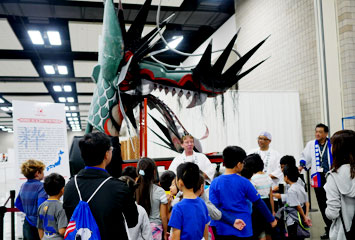
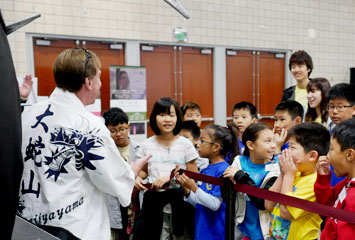
Hawaii Nikkei Legacy
Next, the students visited the exhibition panels, “Hawaii Nikkei Legacy.” This year marks the 150 year anniversary since the first Japanese immigrants migrated to Hawaii. The students learned about; how the Japanese immigrants blended in the Hawaiian culture, hardships they had to endure when the war broke out, and how the Japanese culture took root in Hawaii. Learning about these issues helped the students understand the reason for the strong bond between Japan and America.
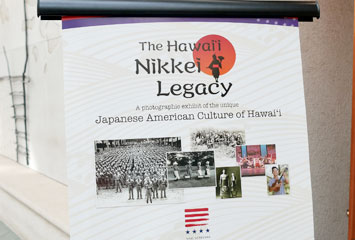
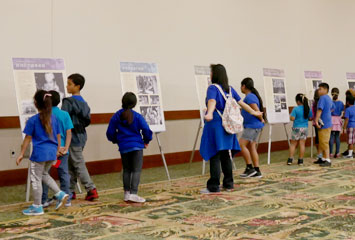
The Pacific Aviation Museum Pearl Harbor
One of the most popular booths among the children was the Pacific Aviation Museum Pearl Harbor. The children were fascinated with a chance to wear actual pilot gear and have hands-on experience with the flight simulation.
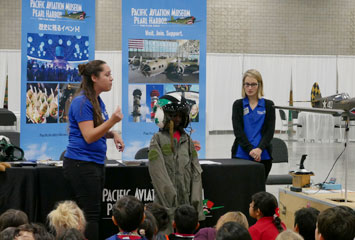
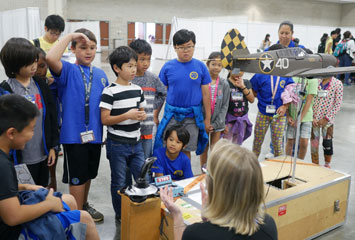
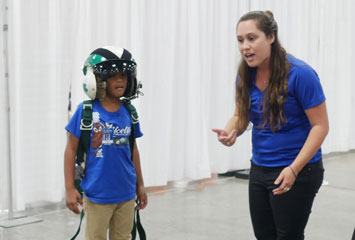
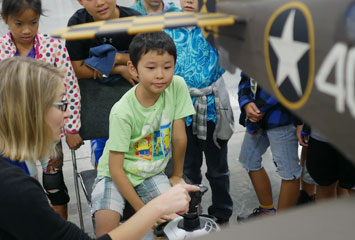
-Interchange With the Different Parts of the World-
People from different parts of the world participated in the exhibition.
Hawaii Taiwan Center
The Hawaii Taiwan Center displayed Taiwanese puppets (gifts from the city of Kaohsiung, Taiwan to Honolulu), handmade crafts, and puppet show costumes. The Naluwa Dance Group, from Mandarin Academy, performed their dance.
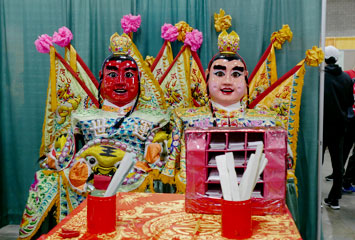
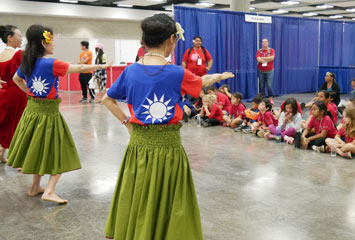
Taiwanese Association of America
This group performed the Dragon Dance that had the spectators all elated, sharing the traditional Taiwanese culture.
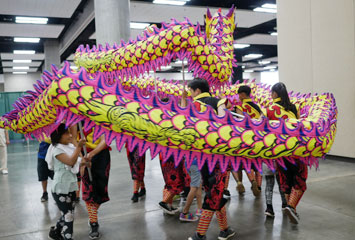
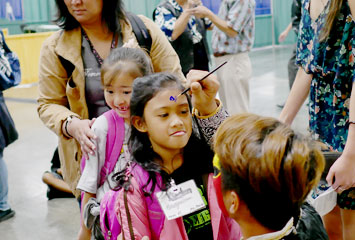
Han-Ul, Inha University
Han-Ul, Inha University performed the beautiful percussion ensemble, Samul-nori, playing four instruments, the jang-gu, buk, jing, and kkwaeg-gwa-ri, traditional Korean musical instruments.
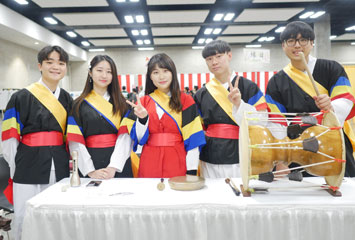
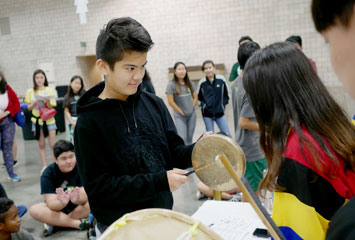
Marshall Islands
People from the Marshall Islands showcased amimono, crafts made from palm tree leaves. The Marshall Islands used to be a mandated territory of Japan until during the WWII; therefore, they sometimes use words that have Japanese origin.
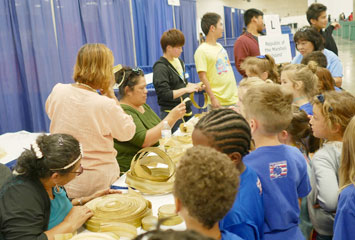
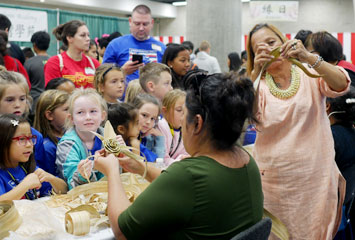
Wagana Aboriginal Dancers
The dancers performed Australian Aboriginal dance. Children enjoyed body painting, which was made of natural clay.
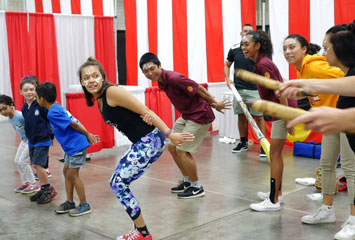
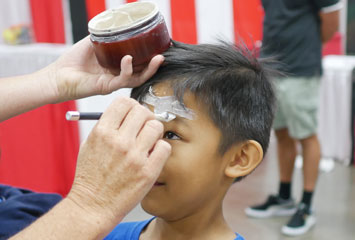
-Interchange with People from Japan-
Students gathered around the Japanese booths and were fascinated by the presentation.
Sakurakomachi Japanese Music and Dance Group
This group performed the traditional Japanese musical instruments, koto, Tsugaru shamisen, shinobue, and wadaiko. The students were mesmerized with the beautiful tunes.
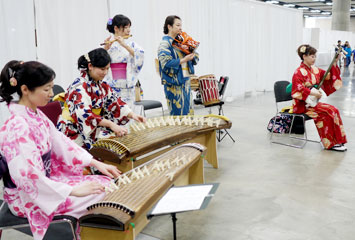
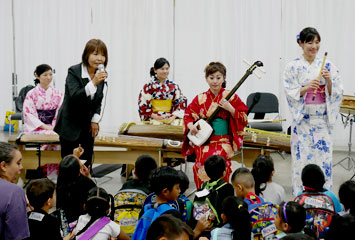
Chigasaki City
Eboshi-Maro is a mascot character of the city of Chigasaki, Honolulu’s sister city. Eboshi-Maro in his Hawaiian aloha shirt and short pants, gained instant fame with children. Did the students become familiar with Chigasaki city?
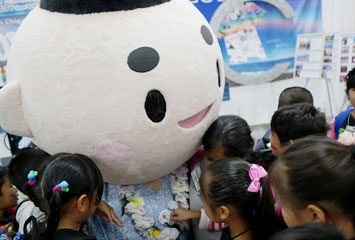
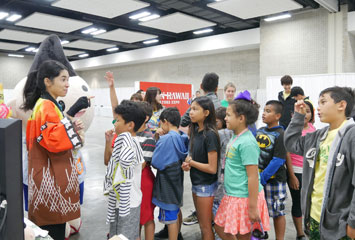
Nani Pomaikai Ribbon Lei
The group demonstrated the difference between ribbon lei, Hawaiian traditional craftwork, Japanese Tsumami-zaiku (“tucked crafts”), and Tsurushi-kazari (“hanging ornaments”). The students were engaged and attentive to the lecture.
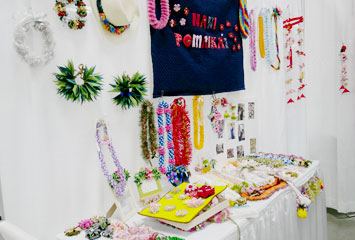
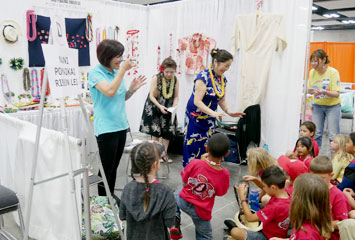
Lohas Festa
Underscoring the theme, “Grass roots environmental awareness leads to great social movements,” Lohas Festa explained to the local students the concept of, “lifestyle that promotes health and sustainable society.”
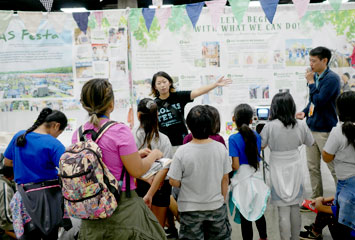
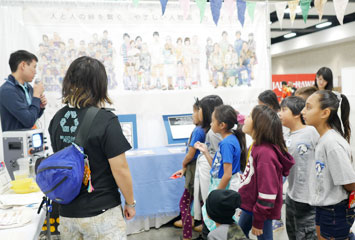
Aoyama Gakuin University Chatters
The cheerleaders from Aoyama Gakuin University cheerleading club, “Chatters”, gave a very upbeat and lively talk about their passion, and brought smiles to everyone through dance.
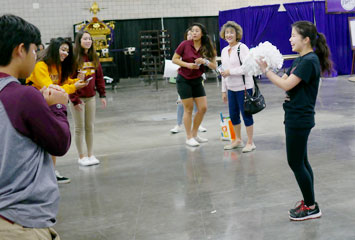
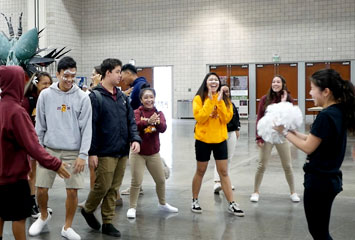
Doyo Chorus Utanakama
The group members, together with the children, sang traditional Japanese children’s songs that have existed for ages. Singing loudly may be the secret for their longevity.
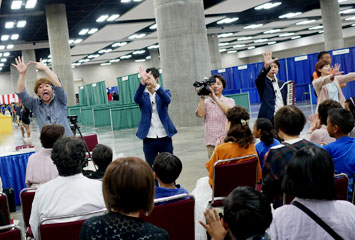
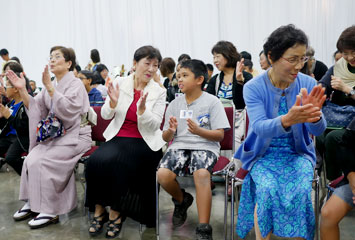
Sakuragaoka Junior Highs School and High School
It is the school’s third time to the Honolulu Festival. Three hundred high school freshmen introduced Japanese culture to the students in Hawaii. The Japanese and local students had a blast with calligraphy, origami (“folding paper art”), and Fukuwarai (“make-a-face game”). The language barrier didn’t seem to be an issue with the students as they tried to communicate in English. It was quite an impressive sight.
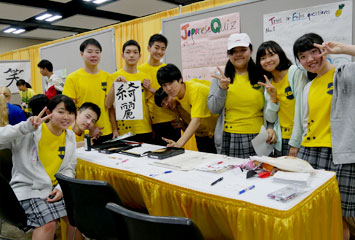
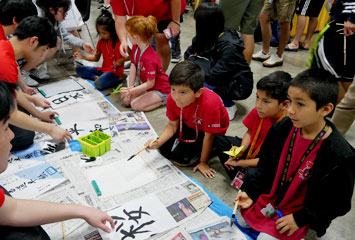
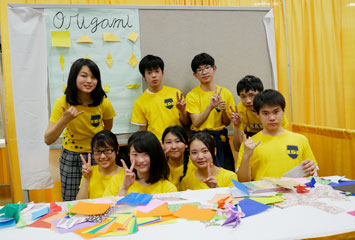
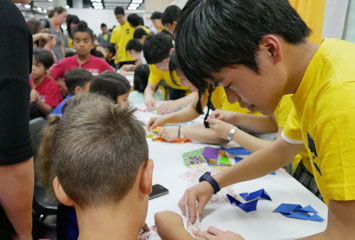
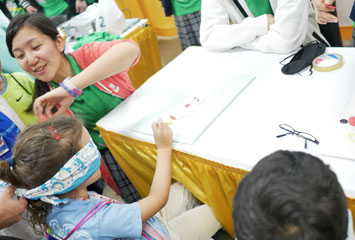
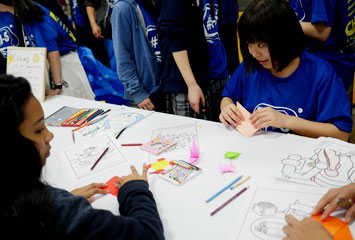
-Finish with Bon Dance-
Following the students’ visit to all the exhibit booths, the last activity took place outside the exhibit hall, a bon dance.
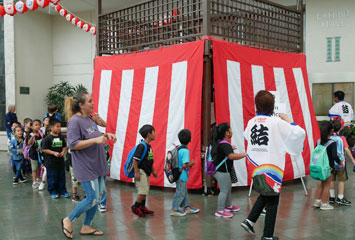
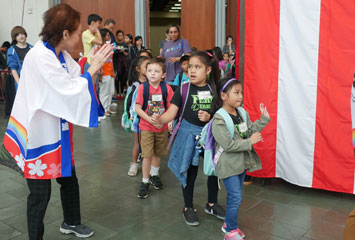
Since the Japanese culture has taken deep root in Hawaii and people are familiar with Japanese tradition, many students danced the bon dance quite well. During the summer, bon dances are held at various locations all over Hawaii.
The following photos are students and the participating groups interacting with one another.
The children’s sparkling eyes were telling it all, the fun that they were having.
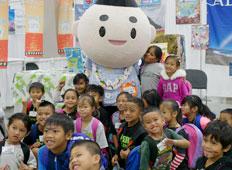
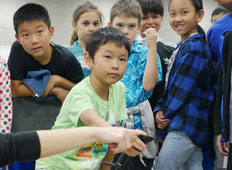
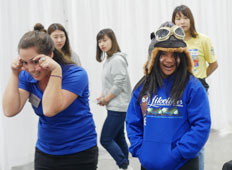
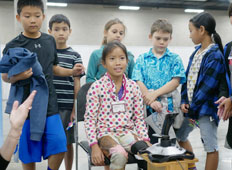
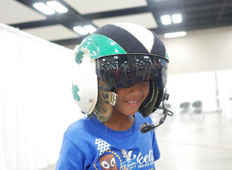
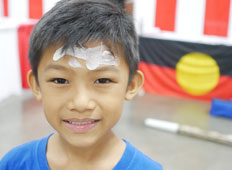
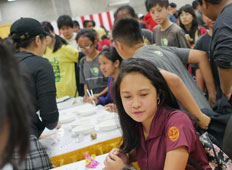
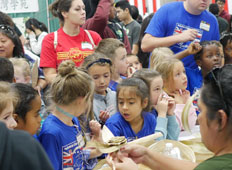
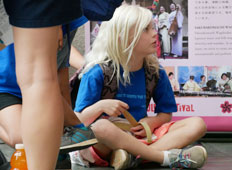
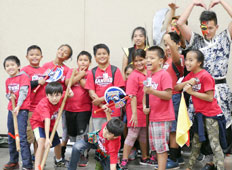
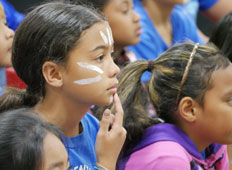
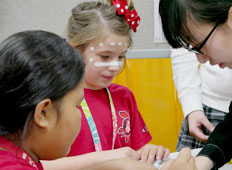
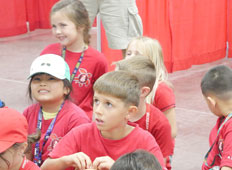
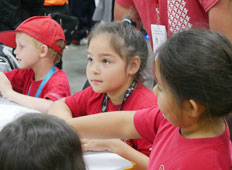
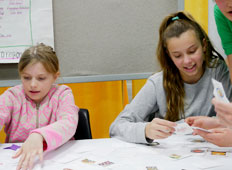
The cross-cultural exchange experience left lasting impressions in the hearts of the children. The students realized that there is bigger world beyond the land of Hawaii, and in each society, a wide variety of people live their lives according to their own traditions and culture.
The Honolulu Festival will continue to host the Educational School Tours for the local students.
The main theme of the Honolulu Festival is “Pacific Harmony – Love and Trust.” Our vision is to, “Search for a peaceful lifestyle through trans-ethnic cultural exchange.” We hope to play a role in attaining world peace through cultivating trans-ethnic and trans-generational friendship and strengthening the bonds among Japan, Hawaii, and Pacific rim countries.

 日本語
日本語





